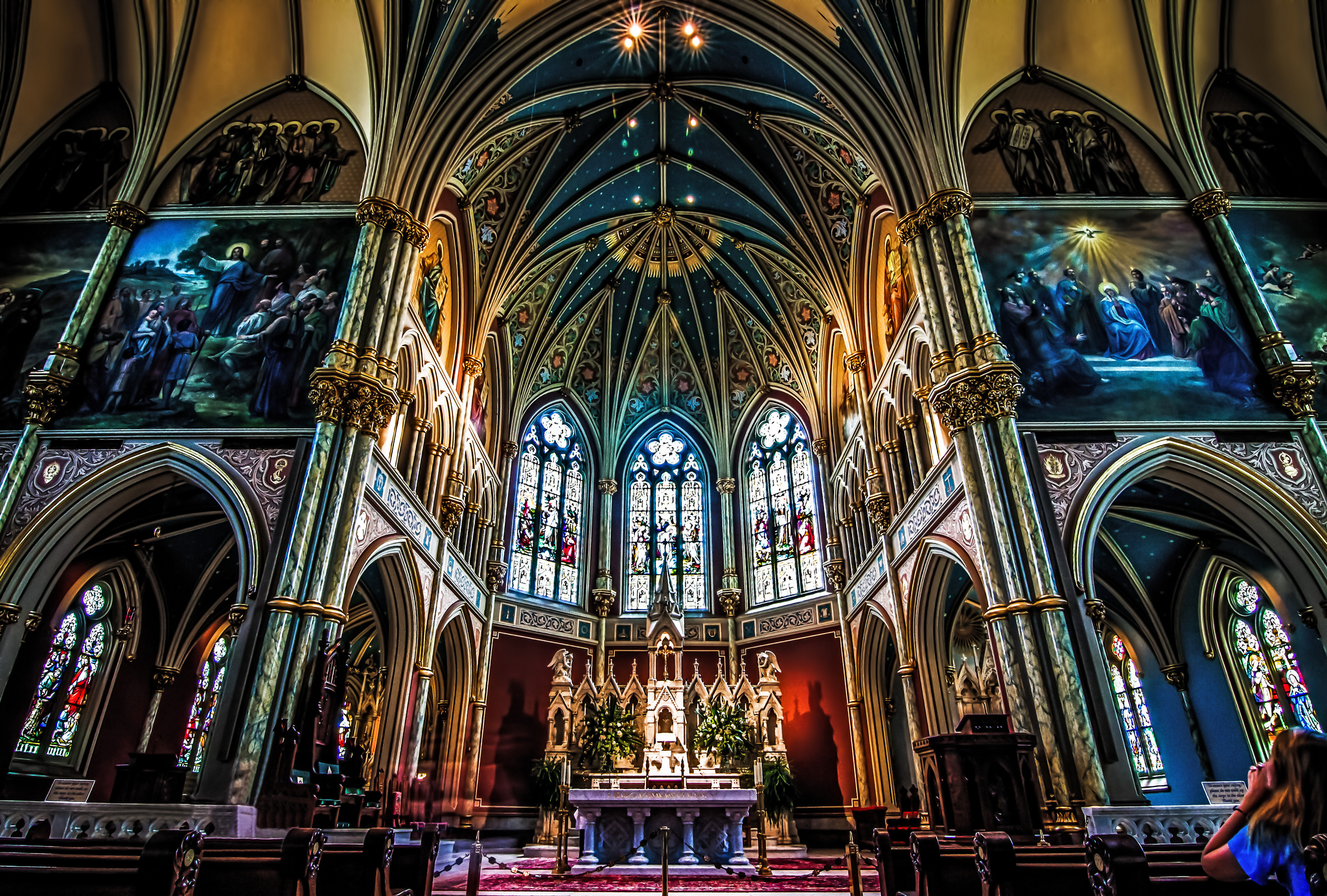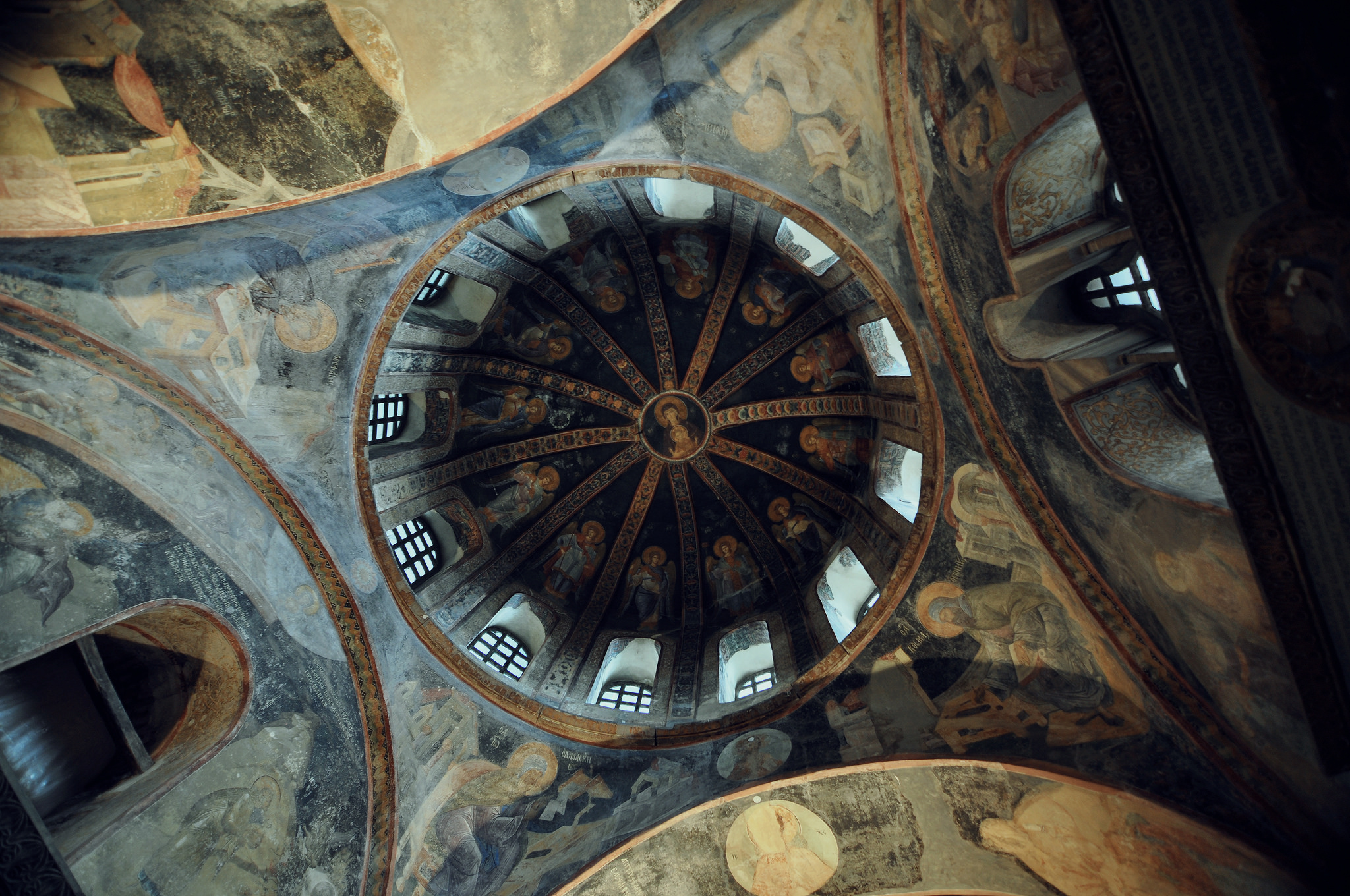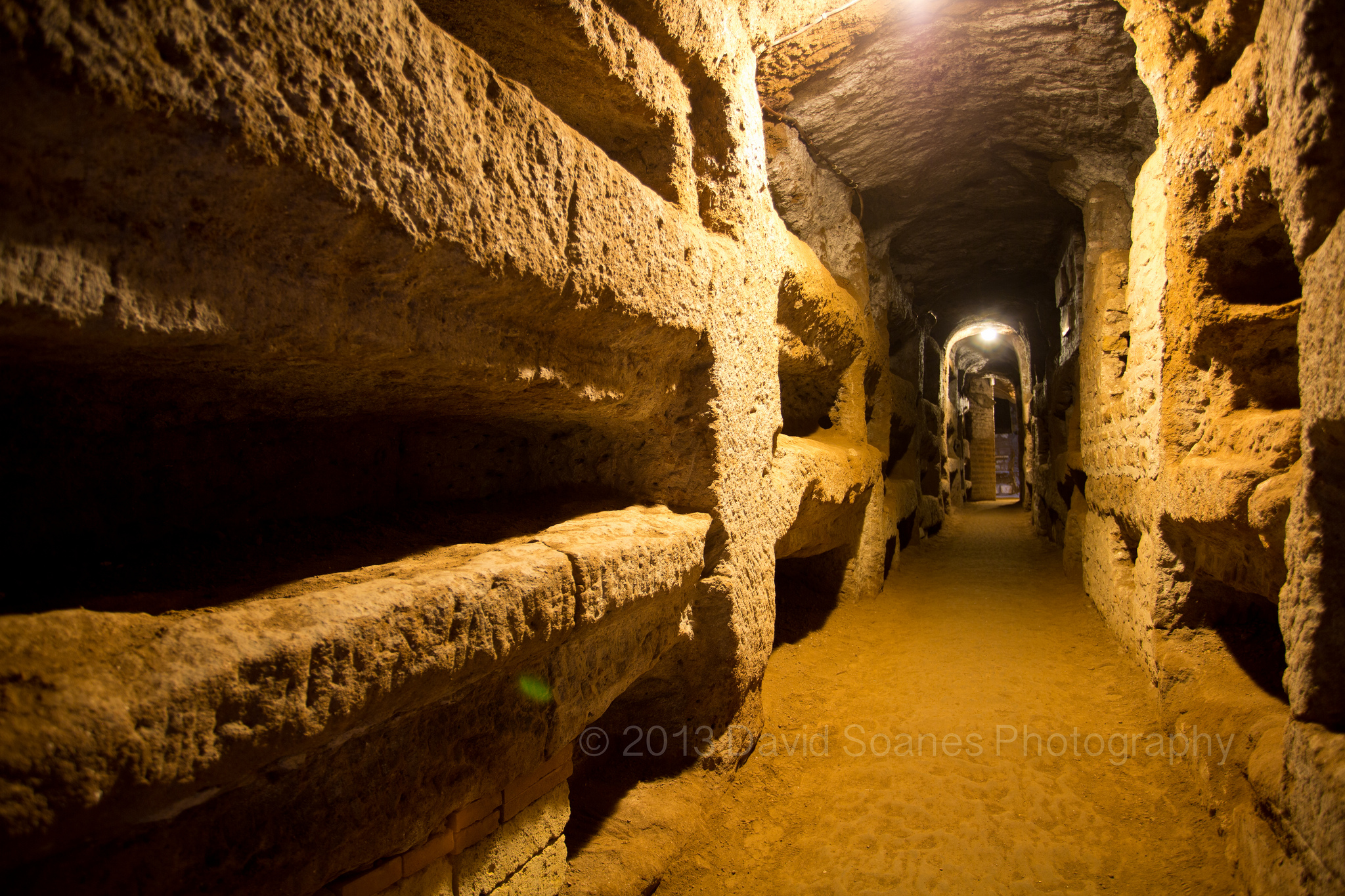(Some of this is taken from a Novus Ordo website, but the quotes check out.)
1. Pope Leo XIII appears to be the first pope to refer to Our Lady as co-redemptrix: “In the Rosary the part that Mary took as our co-redemptrix is set before us as though the facts were even then taking place” (Iucunda Semper, Sept. 8, 1894)
2. The word “co-redemptrix” makes its preliminary appearance on the magisterial level during the reign of Pope Saint Pius X who wrote: “Mary…was associated by Christ Himself in the work of saving humanity” (Mary’s Part in Our Redemption, Canon George Smith, D.D.)
3. In the Acta Apostolicæ Sedis we find a response to a request made by Father Giuseppe M. Lucchesi, Prior General of the Servites (1907-1913), requesting the feast of the Seven Sorrows of Our Lady be elevated to a double of the second class for the entire Church. The Sacred Congregation of Rites granted the request, expressing its desire that “the cultus of the Sorrowful Mother may increase and the piety of the faithful and their gratitude toward the merciful co-redemptrix of the human race may intensify.”
4. On Jan. 22, 1914, the same Congregation granted a partial indulgence of 100 days for the recitation of a prayer of reparation to Our Lady beginning with the Italian words “Vergine benedetta…” and mentioning Our Lady as co-redemptrix: “O blessed Virgin, Mother of God, look down in mercy from Heaven, where thou art enthroned as Queen, upon me, a miserable sinner, thine unworthy servant. Although I know full well my own unworthiness, yet in order to atone for the offenses that are done to thee by impious and blasphemous tongues, from the depths of my heart I praise and extol thee as the purest, the fairest, the holiest creature of all God’s handiwork. I bless thy holy Name, I praise thine exalted privilege of being truly Mother of God, ever Virgin, conceived without stain of sin, co-redemptrix of the human race.”
5. Pope Benedict XV wrote: “[Our Lady] may rightly be said to have redeemed the human race with Christ” (Ibid).
6. Pope Pius XI (1922-1939 addressed pilgrims from Vicenza on Nov. 30, 1933, telling them: “From the nature of His work the Redeemer ought to have associated His Mother with His work. For this reason We invoke her under the title of co-redemptrix,. She gave us the Savior, she accompanied Him in the work of Redemption as far as the Cross itself, sharing with Him the sorrows of the agony and of the death in which Jesus consummated the Redemption of mankind. [22] 5.”
7. During the Lenten commemoration of Our Lady of Sorrows March 23,1934, Pius XI received two groups of Spanish pilgrims, one of which was composed of members of Marian Congregations of Catalonia. Later the Vatican’s official newspaper, L’Osservatore Romano reported his principal remarks to these groups,where the pope thanks the pilgrims for celebrating with him “not only the nineteenth centenary of the divine Redemption, but also the nineteenth centenary of Mary, the centenary of her Co-redemption, of her universal maternity.”
He told the young people present they must: “…follow the way of thinking and the desire of Mary most holy, who is our Mother and our co-redemptrix: they, too, must make a great effort to be coredeemers and apostles, according to the spirit of Catholic Action, which is precisely the cooperation of the laity in the hierarchical apostolate of the Church. [24] 6.” Again this same pope referred to Our Lady as Coredemptrix April 28,1935 in a Radio Message closing the Holy Year at Lourdes: ”Mother most faithful and most merciful, who as co-redemptrix and partaker of thy dear Son’s sorrows didst assist Him as He offered the sacrifice of our Redemption on the altar of the Cross … preserve in us and increase each day, we beseech thee, the precious fruits of our Redemption and thy compassion.”
Because of this usage of the term Coredemptrix in magisterial documents and addresses by the Supreme Pontiff Canon René Laurentin wrote thus in 1951 about its employment: “Used or protected by two popes, even in the most humble exercise of their supreme magisterium, the term henceforth requires our respect. It would be gravely temerarious, at the very least, to attack its legitimacy.” And here we see that the actual term was used by three popes, and referred to by two others in similar terms.
Thus Mary, in a subordinate role to Christ, had a “part with him in the redemption of the human race.”(8) She has been constituted the cause of salvation for the whole human race” (9) She is, therefore, called by the Church “our co-redemptor.” (10) and “the co-operatrix in man’s redemption,” (111) For at the cross, Mary triumphed “utterly over the ancient serpent.” (12)
8 Pope Pius XII, Ad Coeli Reginam.
9 Pope Pius XII, Ingruentiam Malorum
10 Pope Leo XIII, Ubi Primum.
11 Decree of the Sacred Congregation of the Holy Office, “Indulgences,” June 26, 1913, published in Acta Apostolicae Sedis. Also refer to Henry Denzinger, Sources of Catholic Dogma (St. Louis, MO: Herder Book Co., 1957), p. 502, article 1978 a and footnote 2; A. Tanquerey, A Manual of Dogmatic Theology (New York, NY: Desclee Company, 1959), vol. 2, p. 108-109; and Ludwig Ott, Fundamentals of Catholic Dogma (Rockford, IL: Tan Books and Publishers, 1960), p. 212-213.
12 Pope Pius IX, Ineffabilis Deus.
*****************************
Feast of Our Lady of Guadalupe, Patroness of the Americas
Dear Friends,
The above teachings were sent to certain individuals who, calling themselves Catacomb Catholics, a term first used to refer to stay-at-home Catholics by this author, have denied that Our Lady is “necessary to our salvation” in any meaningful way. These individuals also have taken it upon themselves to denounce as heretics myself and others who champion this teaching. They refuse to recognize the fact the popes have in any way taught what is stated above or that in so teaching, they intend to associate Our Lady with our salvation. They quote papal teaching to the effect that nothing is to be interpreted contrary to that sense intended by the Church (DZ 1800), and yet we have above direct evidence that the popes, not just saints and holy people, intended it in that very sense. Unless they wish to say that the pontiffs of the Holy Roman Church can contradict each other, it is difficult to see how one could read the above and then conclude the last five popes do not agree that Mary plays a significant role in our salvation, so much so she merits the title of co-redemptrix.
One of the arguments made by these misguided critics concerning devotion to Our Lady as necessary to our salvation arises from the teachings of Pope Pius XII on the Feeneyite controversy. They claim that to hold this teaching on the co-redemptrix would contradict the teaching of Suprema Haec Sacra that all those without baptism need to do to be saved is to possess perfect charity animated by supernatural faith, and this would and a second element. However those promoting the teaching that Our Lady is necessary to our salvation by way of cooperation with Our Lord in the redemption do not deny this doctrine. What they cited as a teaching of the Church, on this topic, from an approved source, speaks to the baptized, who ordinarily are the ones who read Catholic works and practice devotion to Mary.
Not true concerning those who lack baptism, either because they belong to some non-Catholic sect or are pagans. These individuals would not ordinarily be reading any such Catholic works. The laws and teachings of the Church primarily address those baptized Catholics already within Her pale, not the unbaptized. To presume otherwise is absurd.
Nor can anyone scarcely be accused of heresy merely for quoting the words of an approved work in a public forum, given what is presented above. For despite the objection that certain of these works were not properly vetted by lax bishops influenced by Modernist or other false opinions, unless such a work has been specifically cited as questionable by some reliable Catholic publication pre-October 1958 or called into question by the Holy See, such a contention is groundless. Such a reckless assertion by these misguided souls would call into question ALL imprimatured works, to the great confusion and consternation of those already struggling to retain their Catholic faith. And finally, there is no need to even question varying opinions on the minimum amount of devotion required to satisfy Mary’s “necessity for salvation,” The author one individual quoted on this topic says lack of minimal devotion to Mary will not damn a person, but only place one “in serious danger of compromising” his salvation. For stating this the one quoting this approved author was styled as a heretic.
Yet Msgr. J. C. Fenton notes in his diaries that the matter of co-redemption was still, under Pius XII, an opinion allowed to be openly discussed and held, on either side, by the faithful; it had not yet been defined. He himself was opposed to it (but there are reasons for this which are beyond the scope of this post). All theological controversy on such mates is silenced once the popes have spoken. But up until that time, arguments pro and con may be undertaken regarding it, although it is clear from the above that the popes had already, at least, expressed their own opinions on this matter, which also are to be accepted sincerely and firmly.
Those perpetuating these unjustified attacks also maintain that no Catholic can “publicly preach” the Catholic faith on a website without approval from a (truly) Catholic bishop in their respective diocese. These erroneous assertions are legion among Traditionalist “clergy,” who wish to limit any such commentary to themselves as the “experts,” while ignoring every other canon law on the books. And this particular group in question is now promoting a “validly ordained deacon” as their only official spokesperson, a “valid” ordination they claim occurred in 1963. But unless one qualifies the jurisdiction of those bishops serving under John 23 as valid, no valid ordination is possible. For as the Church officially teaches, both orders and jurisdiction are required for ministering to the faithful in the Church and unless both these prerequisites exist, no minor clergy, priests or bishops are to be considered lawful pastors.
Since 1990, it has been publicly known that in the absence of the clergy, ALL Catholics are required by the magisterium to assume their responsibilities. This is clear from the call to Catholic Action which began with the Vatican Council. But it was specifically mandated by Pope Pius XII in 1957 as follows:
“Christ, before ascending into Heaven, entrusted to His Apostles and through them to His whole Church, the task of preaching the Gospel to the world in His name. Every Christian must therefore realize that part of this responsibility rests on his shoulders…The initiative of the lay apostolate is perfectly justified even without a prior explicit ‘mission’ from the hierarchy… Personal initiative plays a great part in protecting the faith and Catholic life, especially in countries where contacts with the hierarchy are difficult or practically impossible. In such circumstances, the Christians upon whom this task falls must, with God’s grace, assume all their responsibilities… Even so, nothing can be undertaken against the explicit or implicit will of the Church, or contrary in any way to the rules of faith or morals, or ecclesiastical discipline,” (The Mission of Catholic Women, Sept. 29, 1957, The Pope Speaks, Vol. IV. This address was entered into the Acta Apostolica Sedis (AAS) on Nov. 22, 1957, 49:906-922).
In the light of so many encyclicals and addresses on Catholic Action (implicit or explicit will of the Church) and considering Can. 1325 (ecclesiastical discipline) which requires Catholics to defend their faith even when it is denied implicitly, or be considered as condoning heresy (rules of faith or morals), ignoring Pope Pius XII’s teaching on this subject would be heretical itself. For as infallibly stated in Humani generis, anything entered into the AAS is considered as binding on Catholics, and cannot be simply disregarded. Carrying out the “commands” of errant individuals acting on the basis of some presumed “Catholic sense” bolstered by misappropriated and misconstrued theological reasoning is not only contrary to reason but contrary to faith as well. For if those Catholics trying to the best of their ability to obey all the laws of he Church, while acknowledging the expressed will of the continual magisterium and its constant teaching on faith and morals cannot even defend the faith, who indeed will do so?
Daily on the worldwide web, countless individuals are falsifying and misrepresenting the faith at an ever-increasing rate. Few indeed even attempt to stem this inexorable tide of blasphemy, sacrilege and intolerable error and heresy. However ineptly done, without any assistance from the true hierarchy; however imperfectly conveyed or explained, such efforts cannot be omitted without grave sin. On this site as well as others, readers are encouraged to always check out the sources quoted and request copies of those sources not available elsewhere. Very seldom indeed have such requests been received for this purpose. All that can be said is that now more than ever, such honest and diligent inquiry is required of Catholics, not only to affirm their faith but to guarantee the correct statement of Catholic doctrine. As Pope Pius XII taught, WE are now the Church, since the term hierarchy, in its widest sense, includes the laity.
Over the years this author has repeatedly appealed to those regularly defending the faith to join together in policing each other and adhering to set principles that would better guarantee unity in faith. But all this has fallen on deaf ears. The pope alone can secure unity in the Church, so strict adherence to papal teaching and the decrees of ecumenical councils — not lay opinion and expostulation or any demands to submit to lay authority — is the only alternative left Catholics today who wish to hold fast to Catholic truth and defend it. If genuine Catacomb Catholics believe they are bound to defend the faith publicly they also have the obligation to do so in the best manner possible and with the best sources available. Anyone interested in advancing ideas on how to better present the faith in a more unified and dignified fashion while remaining entirely within the confines expressed above by Pope Pius XII may contact this author at answers@betrayedcatholics.com
(All emphasis within quotes in this post is the author’s.)
Blessings,
T. Benns





